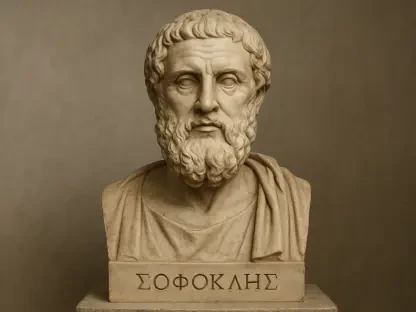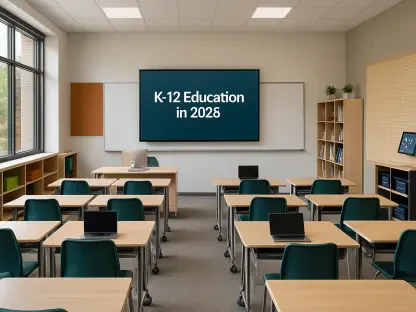Presidential rhetoric has long been a powerful tool in shaping public opinion and influencing policy, especially within the realm of K-12 education. This leverage can have a profound effect, not just on the policies in question but also on the degree of partisan division that surrounds these issues. The influence of presidential rhetoric on education policy and public opinion is examined through a comprehensive study utilizing 18 experiments embedded within the annual Education Next poll, conducted between 2009 and 2021. This article investigates the nuances of this influence, focusing on different American presidents and presidential candidates who have significantly impacted the landscape of K-12 education through their rhetorical engagement.
The Power of Presidential Influence on Education Policy
Presidents have historically leveraged their rhetorical platforms to put a spotlight on education policies. For instance, recent political discourse saw Vice President Kamala Harris sharply criticizing Florida’s state-approved Black history curriculum, drawing substantial public attention to the issue and rallying her political base. Similarly, during his presidency, Donald Trump’s denouncement of critical race theory in K-12 education framed the subject as a controversial and contentious topic, influencing public discourse and deepening existing partisan divides. These instances are far from isolated. They represent a broader strategy employed by presidents to use their influential platforms not just to inform but to aggressively advocate for specific education policies.Historically, presidents have consistently used their rhetoric to advocate for specific educational reforms, rallying support from their own party while often alienating the opposition. This rhetorical approach does more than just outline policy priorities; it signals broader ideological battles that tend to polarize public sentiment. Additionally, presidential rhetoric serves as a barometer for partisan alignment, influencing how the public perceives and interacts with education policy issues. The rhetoric shapes debates, deepens ideological divides, and often sets the stage for larger policy battles, creating ripples that are felt far beyond the immediate scope of education policy.
Historical Context of Presidential Engagement in Education
The involvement of presidents in shaping education policy is not a recent phenomenon but a historical constant. One of the landmark moments was President Lyndon B. Johnson’s 1965 Elementary and Secondary Education Act (ESEA). This landmark legislation was aimed at equalizing educational opportunities by providing federal funds to low-income schools, marking significant federal involvement in what had traditionally been a state and local responsibility. Johnson’s ESEA was a bold step in bridging educational disparities and demonstrated how presidential action could leverage federal resources to address systemic inequities in education.Similarly, George H.W. Bush’s declaration during his presidential campaign to be the “education president” reinforced the notion that education policy could be a central theme in national political discourse. This focus on education continued with President Barack Obama’s Race to the Top initiative, which incentivized states to adopt educational reforms through competitive grants. These presidential actions underscore the critical role that federal leadership can play in steering national education policy, even though most legislative and financial control remains at the state and local levels. By focusing national attention on K-12 education, these presidents exemplified the influential role of federal rhetoric in shaping both policy and public perception.
Partisan Polarization and Presidential Rhetoric
The study conducted by David M. Houston and Alyssa Barone sheds light on how presidential rhetoric can exacerbate partisan divisions within the realm of education policy. When presidents endorse policies that align with their party’s traditional views, it results in polarized public opinions. For example, Democratic presidents generally advocate for increased federal involvement and funding for public schools, while Republicans typically push for local control and school choice options. This division is clearly illustrated in the Trump administration’s support for school choice and opposition to critical race theory, which galvanized Republican support and inflamed opposition from Democrats. Conversely, Obama’s advocacy for the Race to the Top program, which included standardized testing reforms, garnered strong Democratic support but also sparked significant resistance from Republicans.These instances underscore how presidential rhetoric can entrench partisan divides by reinforcing ideological stances. The study’s findings indicate that such rhetoric not only influences public opinion but also serves to solidify party members’ beliefs and opposition to policies endorsed by the other party. As a result, presidential engagement in education policy often leads to a more polarized public landscape, where consensus becomes increasingly elusive. This trend highlights the complex interplay between presidential rhetoric and partisan polarization in shaping public opinion on education policy.
Presidential Endorsements and Public Opinion Shifts
While the study found that presidential endorsements do not drastically change public opinion on a national scale, they significantly influence partisan dynamics. Party members tend to align more closely with their president’s stance on education policies, while opposition becomes more entrenched among the other party. For instance, Anthony Carnevale of Georgetown University noted how Obama’s rhetoric on increasing college readiness standards resonated strongly with Democratic voters but was met with skepticism from Republicans. This alignment with presidential rhetoric indicates the powerful role of party loyalty in shaping public opinion on education issues.However, there’s an intriguing dynamic when presidents endorse policies that are typically favored by the opposite party. Such nontraditional endorsements can lead to a slight decrease in partisan polarization and an increase in public support for these policies. This trend suggests that when presidents adopt unexpected policy positions that cross party lines, they have the potential to bridge partisan divides, albeit modestly. This finding highlights the possibility for presidential rhetoric to create opportunities for bipartisan cooperation, even in the highly polarized realm of education policy. By stepping outside traditional party lines, presidents can foster a more united approach to addressing critical issues in K-12 education.
Federal Role vs. State and Local Control
Despite the prominent role presidents play in shaping public discourse around education policy, the federal government’s actual influence on K-12 education remains relatively limited. Most education funding and decision-making authority lies with state and local governments, with federal contributions accounting for only about 11% of education budgets, even when bolstered by initiatives such as COVID-19 relief funds. This division of responsibilities creates a dynamic where presidential rhetoric can set agendas and frame public debates but often falls short of enacting widespread policy changes without cooperation from state and local entities.This complex interplay between federal rhetoric and local control emphasizes the limitations of presidential influence in bringing about significant policy changes in education. While presidents can drive national attention and shape public opinions on education issues, the implementation of policies often depends on state and local actions. This division underscores the challenges faced by presidential administrations in translating rhetorical engagement into meaningful policy outcomes. Consequently, the effectiveness of presidential rhetoric in creating tangible changes in education policy is often constrained by the decentralization of control and funding within the U.S. education system.
Elusive Bipartisan Consensus
Achieving bipartisan consensus in education policy remains one of the most significant challenges in contemporary American politics. The study highlights the deeply entrenched partisan ideologies that shape public opinion on education issues, making it difficult to bridge divides and reach common ground. Both Democrats and Republicans are often resistant to policies perceived as aligned with the opposition, reinforcing the polarization that characterizes much of the education policy debate.Nonetheless, the potential for bipartisan agreement does exist, particularly when presidents adopt nontraditional endorsements that cross party lines. These instances can lead to a measurable decrease in polarization and a slight increase in public support for such policies. This trend suggests that by taking unexpected policy positions, presidents have the capacity to foster a more collaborative approach to addressing pressing issues in K-12 education. While achieving consensus may be challenging, the findings indicate that there are opportunities for reducing partisanship and promoting a more united front in education policy debates.
Presidential Rhetoric as a Double-Edged Sword
Presidential rhetoric has consistently been a potent instrument in shaping public opinion and steering policy, particularly in the field of K-12 education. This tool doesn’t just influence the policies themselves but also contributes to the degree of partisan division surrounding these issues. The significant influence of presidential rhetoric on education policy and public opinion has been meticulously studied through a series of 18 experiments integrated into the annual Education Next poll, conducted from 2009 to 2021. This research delves into how various American presidents and presidential candidates have wielded their rhetorical skills to substantially impact the landscape of K-12 education. The findings reveal that presidential statements and public positions can indeed sway public sentiment and alter policy discussions, both amplifying and mitigating partisan divides depending on the nature of the rhetoric used. The role of presidential influence thus underscores the complex interplay between political leadership, public opinion, and educational policy, highlighting how targeted rhetoric can serve as a catalyst for change in American education. This comprehensive study serves as a crucial reflection on how executive communication strategies can shape not only policies but also the broader political and social environment surrounding K-12 education.









